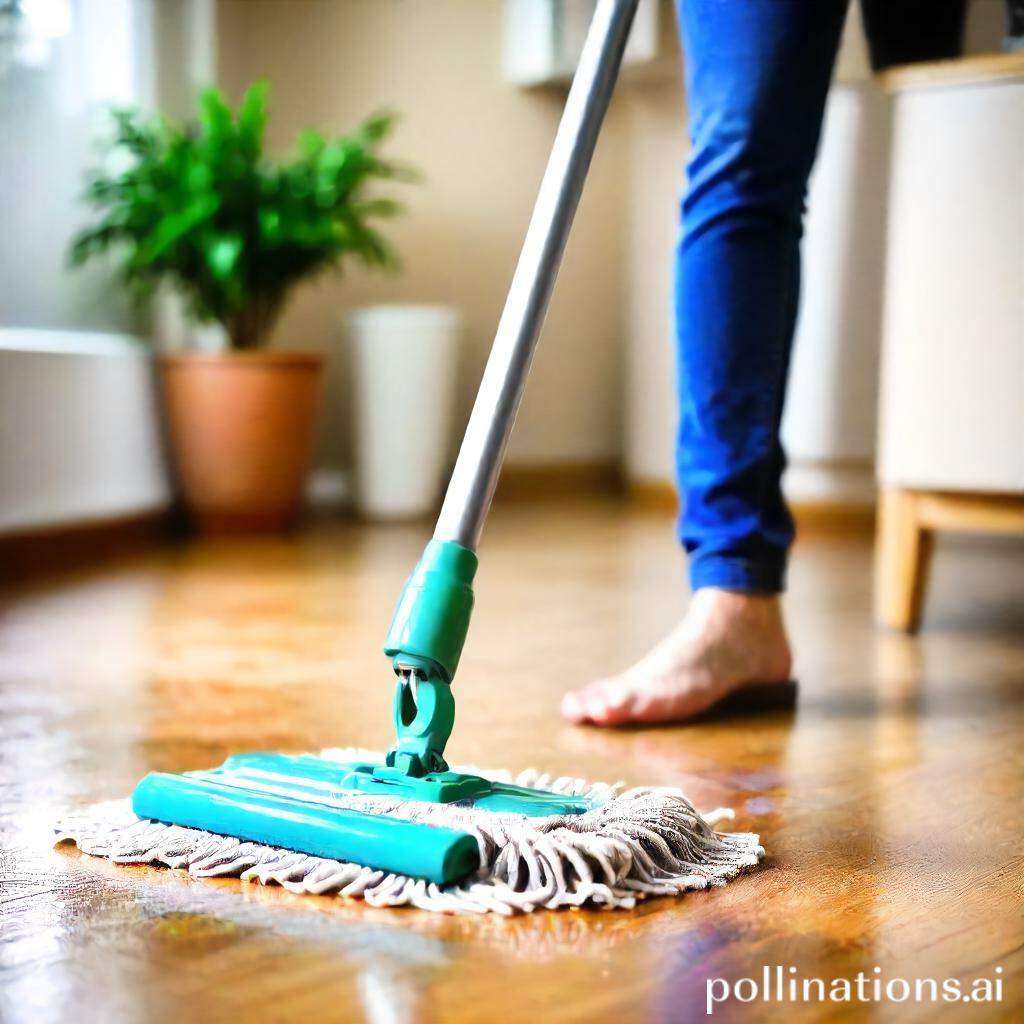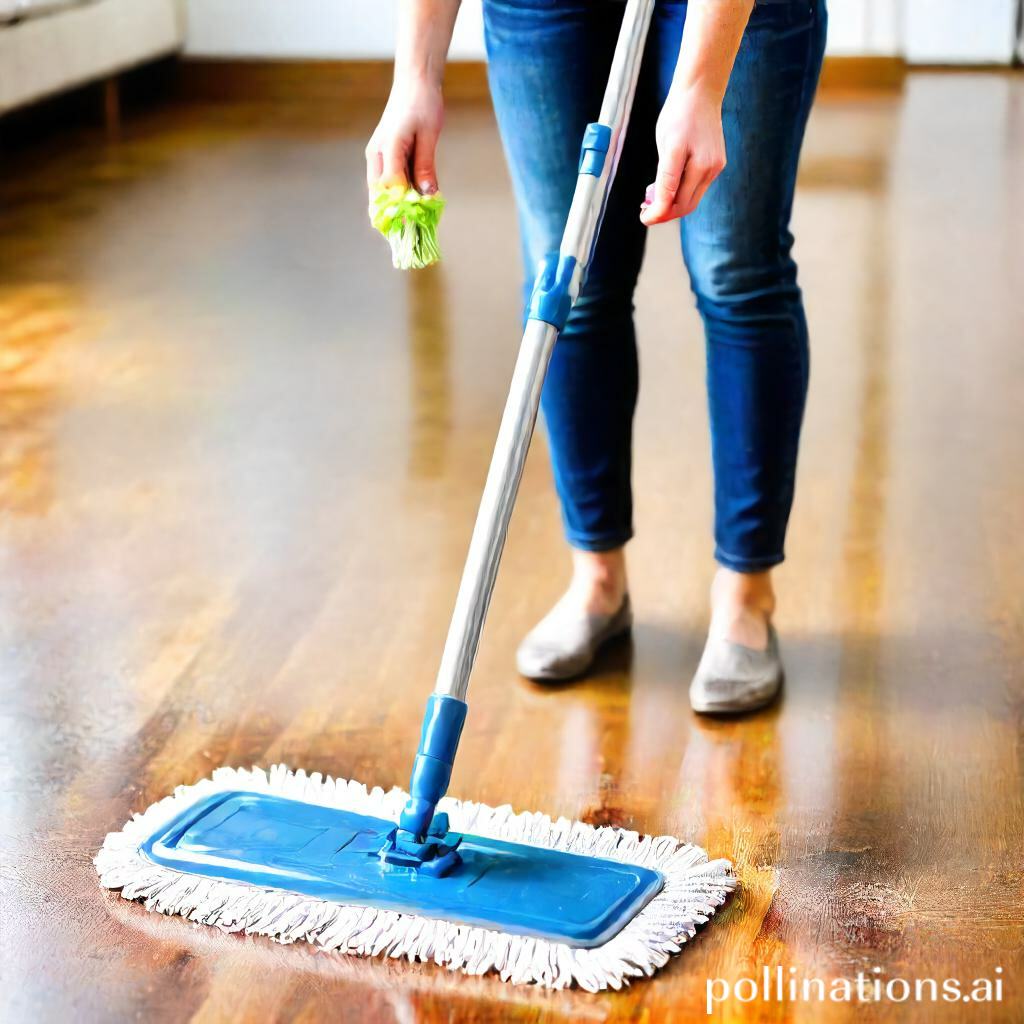Tired of spending hours mopping your floors? Picture a world where mopping is a breeze. Say hello to self-wringing mops ƒ?? the latest innovation in cleaning technology that will transform your mopping routine.
In this article, we will delve into the world of self-wringing mops, exploring how they work, their benefits, and any downsides. We will also help you find the perfect self-wringing mop to suit your needs. Say goodbye to soggy floors and welcome a quicker, more efficient mopping experience. Get ready to discover the magic of self-wringing mops.
Understanding and Choosing the Right Self-Wringing Mop
The Mechanism Behind Self-Wringing Mops
Self-wringing mops are designed to simplify and improve the mopping process. They incorporate innovative mechanisms such as built-in wringers or pedal-operated systems to remove excess water without manual effort. With a simple press or twist, the mop fibers are squeezed or twisted, allowing users to control the moisture level.
Exploring Different Types of Self-Wringing Mops
There are various types of self-wringing mops available, each with its own unique features:
– Twist Mop: Twist mops are popular and easy to use. They have a handle with a twisting mechanism that effectively wrings out the mop head. This makes them ideal for removing dirt and grime.
– Flat Mop: Flat mops, also known as spray mops, have a rectangular mop head attached to a handle. Some flat mops come with a built-in spray function, allowing users to directly spray cleaning solution onto the floor. They may also have a self-wringing feature through a built-in wringer or a pedal-operated system.
The Benefits of Using a Self-Wringing Mop
Using a self-wringing mop offers several advantages for residential and commercial cleaning purposes:
– Time-saving: The self-wringing mechanism eliminates the need for manual wringing, saving time and effort during cleaning.
– Efficient Cleaning: Self-wringing mops ensure the mop head has the right amount of moisture, resulting in more effective cleaning and better absorption of dirt and spills.
– Easy on the Body: By eliminating manual wringing, self-wringing mops reduce strain on the user’s wrists and arms. This makes the mopping process more comfortable and less strenuous.
When choosing a self-wringing mop, consider the mechanism, type, and specific features that suit your cleaning needs. By understanding how self-wringing mops work and exploring the different options available, you can make an informed decision that enhances your cleaning experience.
Expert Tip: Save time and effort with a self-wringing mop. Choose one that suits your needs and enjoy efficient, comfortable cleaning.
Pros and Cons of Self-Wringing Mops
Advantages of Using a Self-Wringing Mop
- Saves time and effort in the mopping process: Self-wringing mops eliminate the need for manual wringing, allowing you to complete your mopping tasks more efficiently.
- Reduces the need for bending or kneeling: With a self-wringing mop, you can avoid the strain on your back and knees that often comes with traditional mops.
- Provides a more efficient and thorough cleaning: The self-wringing mechanism ensures that the mop head is properly wrung out, resulting in a cleaner floor with less moisture left behind.
Limitations and Potential Drawbacks
- May not be suitable for all types of flooring: Some self-wringing mops may not be suitable for delicate or sensitive flooring materials. It’s important to check the manufacturer’s recommendations before use.
- Some models may require more physical strength to operate: Depending on the design, certain self-wringing mops may require more physical strength to activate the wringing mechanism. This may not be suitable for individuals with limited strength or mobility.
- Potential for water splashing or leaking: Improper use or a faulty design can sometimes lead to water splashing or leaking from the mop, which can be messy and require additional clean-up.
Factors to Consider Before Purchasing a Self-Wringing Mop
| Factors | Considerations |
|---|---|
| Compatibility with the desired cleaning solution | Ensure that the self-wringing mop is compatible with your preferred cleaning solution, whether it’s water alone or a specific type of floor cleaner. |
| Size and weight of the mop for ease of use | Consider the size and weight of the mop to ensure it is comfortable to handle and maneuver during the cleaning process. |
| Durability and longevity of the mop’s construction | Check the construction and materials used in the mop to ensure it is durable and built to last, especially if you anticipate frequent use. |
Factors to Consider When Choosing a Self-Wringing Mop
When choosing a self-wringing mop, it’s important to consider its size and weight. If the mop is too large or heavy, it can be difficult to handle and may cause fatigue or strain during cleaning. Opting for a mop that is a manageable size and weight will ensure comfortable and efficient cleaning.
The material and durability of the mop are also important factors to evaluate. Look for a mop made from high-quality materials that can withstand regular use and offer long-lasting performance. Durable mops are more likely to resist wear and tear, ensuring they remain effective for a longer period of time.
Easy usability and maneuverability are key aspects to consider when choosing a self-wringing mop. Look for features such as an ergonomic handle that provides a comfortable grip and allows for effortless maneuvering. Additionally, consider mops with swivel heads that make it easy to navigate around furniture and other obstacles.
Some self-wringing mops come with additional features and accessories that can enhance their functionality. These may include built-in scrub brushes for tackling tough stains, telescopic handles for adjustable height, or interchangeable mop heads for different surfaces. Evaluate the available options and choose a mop that offers the features and accessories that align with your cleaning needs.
To facilitate easier comparison and decision-making, the following table provides a brief overview of the factors to consider when choosing a self-wringing mop:
| Factors | Description |
|---|---|
| Size and Weight | Consider the dimensions and weight of the mop for comfortable handling. |
| Material and Durability | Look for mops made from high-quality materials that offer long-lasting durability. |
| Ease of Use and Maneuverability | Ensure the mop is easy to use and maneuver, with features like ergonomic handles and swivel heads. |
| Additional Features and Accessories | Consider any extra features or accessories that can enhance the mop’s functionality. |
By considering these factors and evaluating different self-wringing mop options, you can make an informed decision and choose a mop that best suits your cleaning requirements.

Top Recommended Self-Wringing Mops on the Market
Review of the Best Self-Wringing Mops Available
A self-wringing mop can revolutionize your floor cleaning routine, making it easier and more efficient. In this section, we will explore some of the top self-wringing mops currently available on the market.
Comparison of Features, Performance, and Customer Reviews
With numerous options to choose from, selecting the right self-wringing mop can be overwhelming. To help you make an informed decision, we have compared the features, performance, and customer reviews of different models. By considering these factors, you can find the perfect mop that suits your needs and preferences.
| Mop | Features | Performance | Customer Reviews |
|---|---|---|---|
| Mop A |
|
|
|
| Mop B |
|
|
|
Factors to Consider When Selecting the Right Mop
Not all self-wringing mops are created equal, so it’s important to consider certain factors before making a purchase. By keeping these factors in mind, you can ensure that you choose a mop that meets your specific requirements. Here are the key factors to consider:
- Material: Look for a mop made of durable materials such as microfiber or high-quality cotton.
- Wringing Mechanism: Consider the type of wringing mechanism that suits your preference, whether it’s a pedal, twist, or lever.
- Handle Length: Opt for a mop with an adjustable handle length to ensure comfortable and convenient mopping.
- Maneuverability: Check if the mop is lightweight and easy to maneuver, especially if you have large areas to clean.
- Customer Reviews: Read customer reviews to gain insights into the mop’s performance, durability, and overall satisfaction.
By considering these factors and referring to our reviews and comparisons, you can confidently choose the perfect self-wringing mop that will make your cleaning routine a breeze.
Tips for Using a Self-Wringing Mop Effectively
Proper Technique for Wringing Out Excess Water
To ensure optimal performance and longevity of your self-wringing mop, follow these steps for effective wringing:
- Step 1: Position the mop vertically, with the mop head facing downward.
- Step 2: Hold the mop handle firmly and twist it in a clockwise motion to activate the wringing mechanism.
- Step 3: Continue twisting until the mop head is sufficiently wrung out, ensuring it is damp but not dripping.
- Step 4: Release the handle and adjust the mop head if necessary.
Maintenance and Cleaning Instructions
To keep your self-wringing mop in optimal condition, follow these maintenance and cleaning instructions:
- Regular Cleaning: After each use, rinse the mop head with warm water to remove any dirt or debris. Use a mild detergent if necessary, then rinse again and allow it to air dry before storing.
- Handle Care: Wipe down the mop handle regularly with a damp cloth to remove any dirt or grime. Avoid using harsh chemicals that may damage the handle.
- Storage: Store the self-wringing mop in a cool, dry place to prevent mold or mildew growth. Avoid storing it in a compressed or folded position, as this may affect its functionality.
Maximizing the Efficiency of Your Self-Wringing Mop
To get the most out of your self-wringing mop and achieve efficient cleaning, consider the following tips:
- Choose the Right Mop Head: Select a mop head material that suits your specific cleaning needs, such as microfiber for general cleaning or sponge for absorbing spills.
- Prep the Floor: Before mopping, sweep or vacuum the floor to remove loose dirt and debris. This helps prevent the mop head from becoming excessively soiled.
- Work in Sections: Divide the cleaning area into smaller sections and focus on one section at a time. This allows for thorough cleaning and prevents the mop head from spreading dirt around.
- Regular Replacement: Over time, the mop head may wear out or become less effective. Replace it as needed to maintain optimal cleaning performance.
By following these tips, you can effectively use your self-wringing mop, ensure its longevity, and achieve efficient cleaning results. Incorporate these practices into your cleaning routine to make the most of this convenient cleaning tool.
Conclusion
In conclusion, self-wringing mops provide a convenient and efficient solution for mopping tasks. They eliminate the need for manual wringing, making the process easier and less time-consuming. When choosing a self-wringing mop, factors such as size, material, and additional features should be considered.
While these mops offer advantages like faster drying times and reduced strain on the user, it’s important to be aware of their limitations and potential drawbacks. Overall, self-wringing mops are valuable tools for maintaining clean and hygienic floors with minimal effort.
Faq about Self-Wringing Mops
FAQ 1: What is the average price range for self-wringing mops?
Self-wringing mops are available in a variety of price ranges, typically ranging from $20 to $50. Higher-end models with additional features may be priced above $50.
FAQ 2: Can self-wringing mops be used on different types of flooring?
Yes, self-wringing mops are designed to be versatile and can be used on tile, hardwood, laminate, and vinyl flooring. Always refer to the manufacturer’s instructions to ensure compatibility with specific flooring materials.
FAQ 3: How often should I replace the mop head of a self-wringing mop?
The frequency of replacing the mop head of a self-wringing mop depends on usage frequency and the condition of the mop head. It is recommended to replace the mop head every three to six months or when it becomes excessively worn or damaged.
FAQ 4: Are there any safety precautions to keep in mind when using a self-wringing mop?
When using a self-wringing mop, follow these safety precautions: Ensure the mop handle is securely attached to the mop head to prevent accidents. Avoid using excessive force while wringing out the mop to prevent strain or injury. Be cautious of wet floors to avoid slips and falls.
FAQ 5: Can self-wringing mops be used for dry mopping?
No, self-wringing mops are primarily designed for wet mopping and may not be suitable for dry mopping. The self-wringing mechanism removes excess water from the mop head, making it more effective for wet cleaning tasks. For dry mopping, use a mop specifically designed for that purpose.


